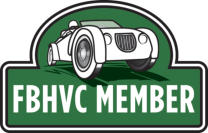Cavalier Mk1 Centaur
1978 to 1979


Welcome to the Cavalier and Chevette Club
Your friendly Vauxhall - Opel Club since 1994
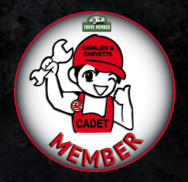

© Cavalier and Chevette Club 2023
We acknowledgement to Vauxhall Motors Ltd

The
name
Centaur
comes
from
the
Greek
Κένταυρος,
Kéntauros
or
hippo-centaur
and
is
a
mythological
creature
with
the
head,
arms,
and
torso
of
a
human
and
the
body
and
legs
of
a
horse,
as
a
choice
of
name
for
a
well-engineered,
attractive,
sleek
convertible
car
it
really
doesn’t
cut
the
mustard.
It
was
however
a
name
that
General
Motors
held
on
their
portfolio
of
car
and
truck
nomenclature
and
was
first
used
in
the
US
on
a
Design
Concept
vehicle
called
the
GMC
Centaur
and
as
the
picture
shows
it
was
quite
an
apt
name
for
that
particular
vehicle!
Crayford
Engineering
Group,
with
a
workshop
based
in
Westerham
near
Sevenoaks
in
Kent,
had
built
up
an
enviable
reputation
for
modifying
all
sorts
of
cars
from
Fords
to
Mercedes,
from
highly
tuned
engines,
stretched
chassis
and
most
of
all
for
convertible
conversions.
Their
first
foray
into
the
General
Motors
stable
was
an
up-market
version
of
the
Vauxhall
HB
Viva
called
“Prince”
which
was
a
flop.
The
second
was
far
more
successful,
the
HB
Viva
convertible,
these
are
still
very
rare
and
are
highly
collectable.UK
at
Westerham
in
1970,
and
was
photographed
outside
Crayford
House,
the
home
of
Crayford’s
Managing
Director
David
McMullan.
Motor
magazine
at
the
time
ran
a
small
piece
claiming
a
sole
UK
concessionaire
had
been
appointed
in
East
Grinstead
but
this
never
came
to
anything
and
to
my
knowledge
no
Opel
Commodore
or
the
similar
Rekord
C
convertibles
were
sold
in
the
UK,
it
certainly
was
never
advertised
and
the
prototype
was
sold
on
to
Deutsch
Coach-builders
in
Cologne
Germany.
The
next
GM
car
that Crayford were involved with is almost forgotten today and was a chopped roof version of the Opel Commodore A 2 door Coupe.
Only
one
LHD
prototype
of
the
Commodore
convertible
was
made
in
the
Butlion
of
Vauxhall
who
worked
in
the
Engineering
Department
at
Luton
and
would
rise
to
become
a
senior
Director
at
Vauxhall
in
the
mid-1980s.
He
had
seen
the
Cavalier
mock-up
and
thought
it
was
a
shame
such
an
attractive
looking
car
was
just
let
die.
In
brief
following
discussions
between
Vauxhall
and
Crayford
set
up
by
Butlion,
the
pictures
and
exact
dimensions
of
the
mock-up
were
released
to
Crayford
who
then
went
on
to
produce
a
fully
fitted
working
prototype
in
early
1978.
In
a
further
twist
in
1987
David
McMullan
decided
to
retire.
The
Crayford
Company,
whose
biggest
assets
were
the
worldwide
brand
label
and
the
Argo
ATV
franchise,
was
sold
to
a
new
partnership
lead
by
David
Butlion,
by
then
a
senior
Director
at
Bedford
Truck
and
Bus
Division.
The
Argo
made
Crayford
the
world’s
largest
supplier
of
ATV
machines
outside
North
America.
In
1989
David
Butlion
sells
the
business
and
leaves
to
develop
a
new
sports
car
with
an
ex
Vauxhall
designer.
They
set
up
a
factory
in
Devon
to
build
a
fabulous
car
like
a
Lotus
7
on
Steroids
called
a
Merak.
They
made
only
6,
all
sold
in
Germany
&
Japan
before
David
Butlion
ran
out
of
funding
and
had
to
wind
up
the
company
in
1993.
He
and
his
family
had
to
sell
their
home
in
Harpenden
and
move
back
to
South
Africa
after
16
years
in
the
UK.
When
the
Cavalier
Mk1
was
launched
in
1975
it
was
an
instant
sales
hit
and
as
discussed
elsewhere
on
the
site
Vauxhall
were
far
more
involved
in
the
development
and
design
than
most
people
give
Vauxhall
credit
for.
Late
in
1976
the
Luton
Design
studio
had
produced
a
concept
mock-up
of
a
Cavalier
Convertible
based
on
the
Coupe
body-shell,
remember
it
was
also
around
this
time
that
Vauxhall
had
the
two
Chevette
Saloon
Convertibles
built.
No
further
work
was
done
on
the
Convertible
idea
and
attention
switched
full
time
to
what
would
become
the
Cavalier
Sportshatch.
David
McMullan
at
Crayford
had
many
contacts
throughout
the
motor
industry
and
one
of
these
was
David
Crayford
announced
the
Cavalier
Centaur
to
the
press
in
August
1978,
based
on
the
Vauxhall
Cavalier
Mk1
2000GLS
Coupe
along
with
full
UK
Type
Approval
and
fully
backed
by
Vauxhalls
factory
warranty.
The
cost
at
announcement
was
£7,103,
of
which
£2,808
was
for
the
conversion
but
if
automatic
transmission was specified or Campagnolia magnesium alloy wheels cost could break the £8k barrier. Although expensive, as a full size 5 seat convertible it had little competition at the price.
The
conversion
was
also
available
on
the
Opel
Manta
but
only
2
were
ever
produced.
At
the
same
time
of
the
launch
it
was
confirmed
that
Magraw
Engineering
Ltd
would
build
the
car
under
licence
to
Crayford
at
their
workshop
in
Mumford
near
Plymouth.
Magraw
Engineering
had
employed
a
lot
of
the
skilled
workforce
made
redundant
after
Mumford
Conversions
Ltd
had
gone
bust
earlier.
Magraw
also
had
ties
with
the
large
Vauxhall
dealer
chain,
KJ
Motors
Ltd,
but
the
car
could
be
ordered
at
any
Vauxhall
dealer
who
would
then
purchase
the
car
direct
from
Magraw
Engineering
Ltd.
On
the
exterior
of
the
car,
a
"Centaur"
badge
is
on
the
front
wings
and
boot
lid,
while
on
the
B
post
mouldings
a
Vauxhall
griffin
can
be
found.
5
1/2J
x
13"
Rostyle
wheels
are
standard,
while
Campagnolo
alloys
were
an
option.
The
roof
section
is
formed
of
a
strong
T-bar
and
is
coupled
to
the
B
posts
and
outriggers
for
strengthening
as
well
as
front
and
rear
bracing
for
rigidity.
Fixed
rear
quarter
glass
ensures
good
all-round
visibility
when
the
hood
is
up
and
offers
draft
protection
for
the
rear
passengers
when
the
hood
is
down.
The
hood
can
be
opened
and
closed
using
gas
operated
struts.
When
opened,
a
tailored
cover
completely
encloses
the
hood
to
enhance
the
car's
flowing
contours.
When
the
hood
is
closed,
this
cover
is
stored
on
the
rear
parcel
shelf.
The
interior
trim
is
the
standard
velour
trim
of
the
Cavalier
GLS
in
black,
blue
or
beige.
Each
vehicle
carries
its
own
commission
number
in
the
glove
box.
In
total
118
examples
were
produced
but
the
reason
production
stopped
was
Vauxhall deleted the Cavalier Coupe for the 1979 model year meaning Centaur production stopped at the same time. There is thought to be only around 20 of the 118 Centaurs built left on the road. With thanks to Dave at
www.vauxpedia.net
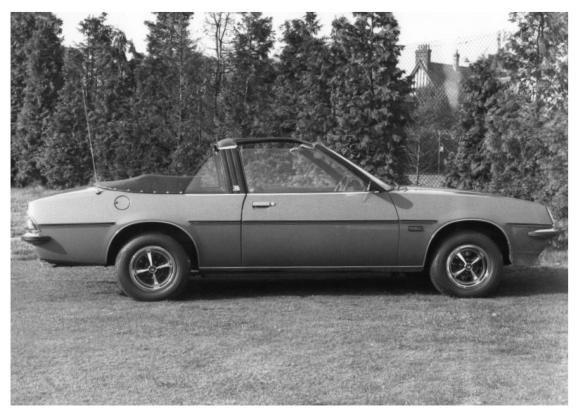
Prototype based on the 1900 GlS Coupe.
Cavalier Mk1 Centaur Brochure.
An earlier picture of Concept 2 painted in yellow.
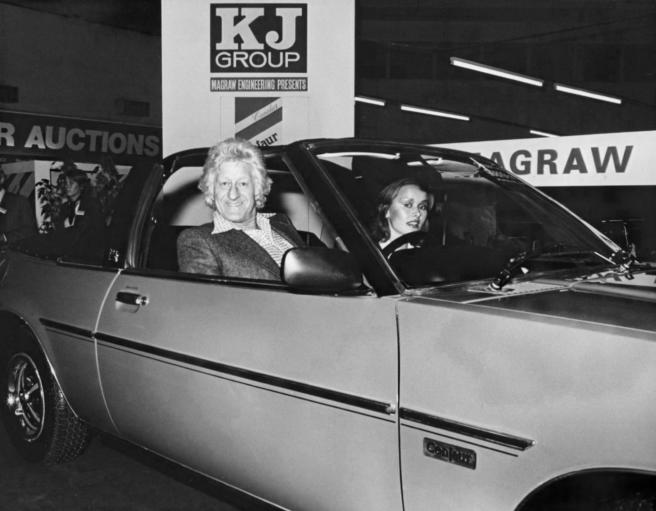
Jon Pertwee on the Magwar stand at the London Motor Show in 1978.
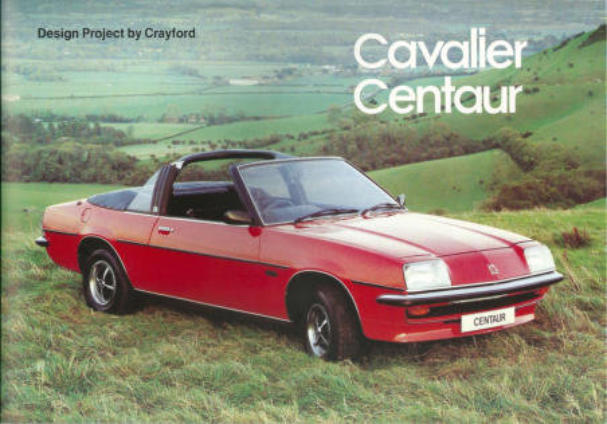


James Hunt at KJ Motors Promotion. Don’t forget James Hunt was employed as a Vauxhall Ambassador at the time.

